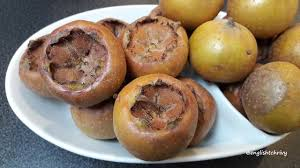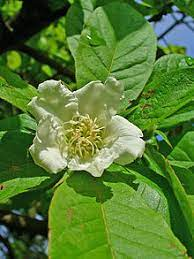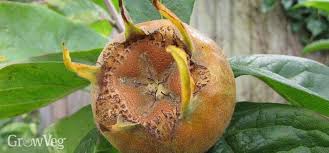Medlar trees (Mespilus germanica) are a hidden gem in the world of fruit-bearing plants, offering unique and delicious fruits, yet remain underappreciated by many gardeners. Despite their humble appearance—no vibrant spring blooms, just large, individual white flowers against glossy green leaves—medlars are worth cultivating. Let’s explore why you should consider adding a medlar tree to your garden and how to enjoy these fascinating fruits.
The Medlar’s Image Problem
Medlar fruits often receive a bad reputation, and for three main reasons: their strange ripening process, their “acquired taste,” and their somewhat off-putting name. Medlar fruits are not ready to eat when fresh; they must soften and brown, a process called “bletting.” Many people wrongly assume that the fruit must rot before it can be consumed, but this is not the case. The fruit’s sweetness increases as it softens, developing a unique flavor profile that combines subtle citrusy notes with the richness of stewed apples.
Additionally, the fruit’s name—sometimes referred to as “cul de chien” in French—draws a less-than-flattering comparison to a dog’s rear end. While this might sound unappealing, it’s mostly the medlar’s shape and its brown flesh that lend themselves to this unflattering comparison. Despite this, medlars are a flavorful and versatile fruit that shouldn’t be underestimated.

Why You Should Grow a Medlar Tree
Medlar trees are self-fertile, meaning you only need one tree to produce fruit, making them easy to grow even in smaller spaces. These trees are generally low-maintenance, resistant to pests and diseases, and require minimal pruning. After the tree’s initial formative years, all that’s necessary is removing any dead or overcrowded branches.
The medlar tree itself is also a beauty in the garden. It has a lovely spreading, almost weeping habit, and can be grown as a bush on a dwarfing rootstock or as a small tree (typically 12-15 feet tall). It’s an excellent specimen tree in lawns or gardens, and at Grimsthorpe Castle in Lincolnshire, UK, the medlar trees have been topiarized to create a striking visual effect.

Several cultivars exist, including the well-known “Nottingham” variety, which is widely available and produces high-quality fruit. The “Royal” cultivar is said to be edible before the fruit fully bletts, making it a good option for those who prefer a less ripe, firmer fruit.
Best Conditions for Growing Medlars
Medlars are adaptable to various conditions, though they thrive best in a warm, sheltered location with moist, well-drained soil. They will do well in most soils, except those that are excessively chalky or poorly drained. During the tree’s first few years, it’s essential to water it during dry spells to ensure healthy growth.
Medlar trees do best when not exposed to strong winds, which can damage the flowers. While they prefer full sun, they can tolerate partial shade. In fact, my medlar tree, located in a shaded east-facing bed, still produces well despite receiving only a few hours of sunlight each day.
Harvesting and Storing Medlars
Harvest medlars in late October or November, while the fruit is still hard. Store the unripe fruit in a cool, airy place, on a bed of sand or paper, with the stalks facing up. To prevent mold and rotting, dip the stalks in a strong salt solution before storing them. After a week or two, the fruit will have bletted—its skin will brown, become slightly wrinkled, and the flesh will soften. The best time to eat a medlar is when it’s fully bletted, as this is when it reaches its most tangy, citrus-like flavor.
How to Enjoy Medlar Fruits
Eating a medlar fruit requires patience and a bit of effort. The fruit contains several large, chunky seeds, so you won’t get a lot of flesh from each one. To eat, simply scoop the soft, brown flesh out with a teaspoon. Medlar fruit pairs beautifully with wine, port, or cheese, and can also be mixed with sugar and cream. However, I recommend enjoying it on its own to truly appreciate its unique flavor. Adding medlar pulp to breakfast yogurt can also be a delightful treat.
Medlars are most commonly used in making jelly or cheese, where the fruit is stewed and passed through a sieve. It may take a fair number of fruits to make even a small jar of jelly, but the effort is worth it for the satisfying result. And, when you serve your homemade medlar jelly, watch the surprise on your guests’ faces as they try to guess what it is!
Conclusion
Medlar trees may not be the most conventional choice for your garden, but they are undoubtedly worth considering. With minimal care and attention, you’ll enjoy delicious fruits that can be eaten raw, made into preserves, or paired with other treats. So, embrace the medlar—its unique taste and charming tree form are sure to become a delightful addition to your gardening repertoire.
